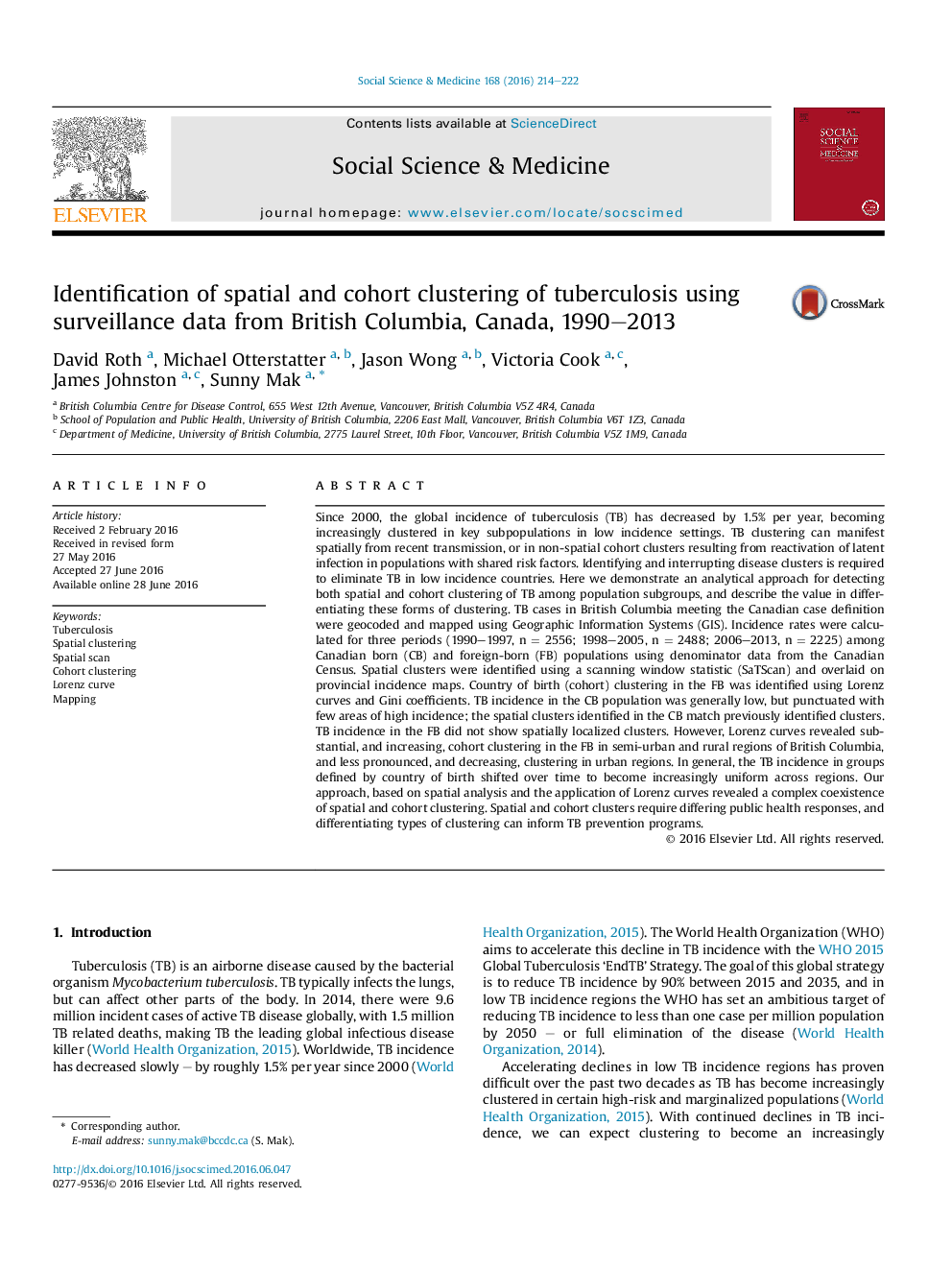| کد مقاله | کد نشریه | سال انتشار | مقاله انگلیسی | نسخه تمام متن |
|---|---|---|---|---|
| 5046908 | 1476001 | 2016 | 9 صفحه PDF | دانلود رایگان |
- Tuberculosis cases in British Columbia are clustered spatially and non-spatially.
- Spatial clustering is more common in Canadian-born cases.
- Non-spatial cohort clustering is more common in foreign-born cases.
- Differentiating types of clustering helps to clarify required public health action.
Since 2000, the global incidence of tuberculosis (TB) has decreased by 1.5% per year, becoming increasingly clustered in key subpopulations in low incidence settings. TB clustering can manifest spatially from recent transmission, or in non-spatial cohort clusters resulting from reactivation of latent infection in populations with shared risk factors. Identifying and interrupting disease clusters is required to eliminate TB in low incidence countries. Here we demonstrate an analytical approach for detecting both spatial and cohort clustering of TB among population subgroups, and describe the value in differentiating these forms of clustering. TB cases in British Columbia meeting the Canadian case definition were geocoded and mapped using Geographic Information Systems (GIS). Incidence rates were calculated for three periods (1990-1997, n = 2556; 1998-2005, n = 2488; 2006-2013, n = 2225) among Canadian born (CB) and foreign-born (FB) populations using denominator data from the Canadian Census. Spatial clusters were identified using a scanning window statistic (SaTScan) and overlaid on provincial incidence maps. Country of birth (cohort) clustering in the FB was identified using Lorenz curves and Gini coefficients. TB incidence in the CB population was generally low, but punctuated with few areas of high incidence; the spatial clusters identified in the CB match previously identified clusters. TB incidence in the FB did not show spatially localized clusters. However, Lorenz curves revealed substantial, and increasing, cohort clustering in the FB in semi-urban and rural regions of British Columbia, and less pronounced, and decreasing, clustering in urban regions. In general, the TB incidence in groups defined by country of birth shifted over time to become increasingly uniform across regions. Our approach, based on spatial analysis and the application of Lorenz curves revealed a complex coexistence of spatial and cohort clustering. Spatial and cohort clusters require differing public health responses, and differentiating types of clustering can inform TB prevention programs.
Journal: Social Science & Medicine - Volume 168, November 2016, Pages 214-222
